Abstract
A method for packing soil columns to investigate viral transport phenomena is described. The columns were 10 cm in diameter and ranged from 33 to 100 cm in length. Field conditions of the soil, including bulk density and profile, were reproduced in columns. Ionic gradients resulting from sequential applications of wastewater and distilled water affected the movement of poliovirus I (Chat) through soil. Compared with 33-cm- and 66-cm-length columns, lower concentrations of infectious virions were observed in the percolates from 100-cm soil columns. These results may be attributed to the greater pore volume in the longer columns (the greater volume of soil contained in these columns), whereas the volume of liquid applied was constant for all columns.
Full text
PDF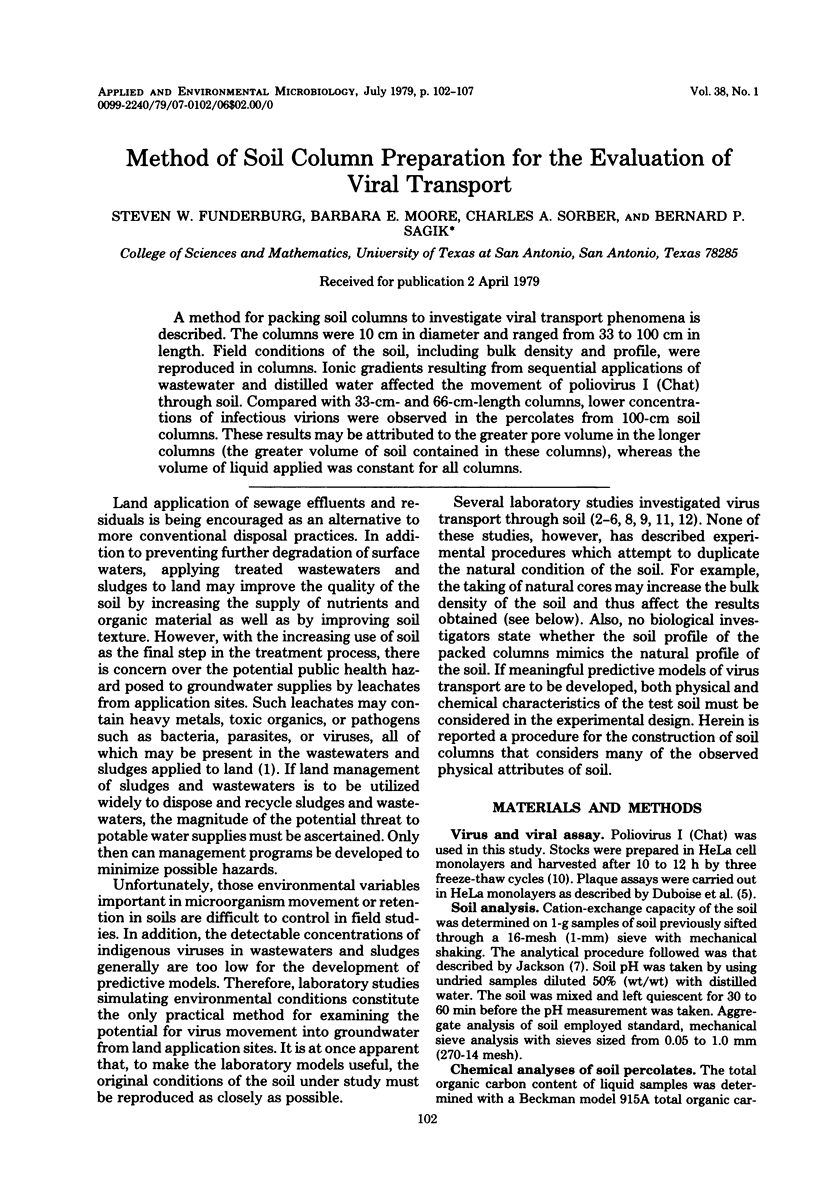
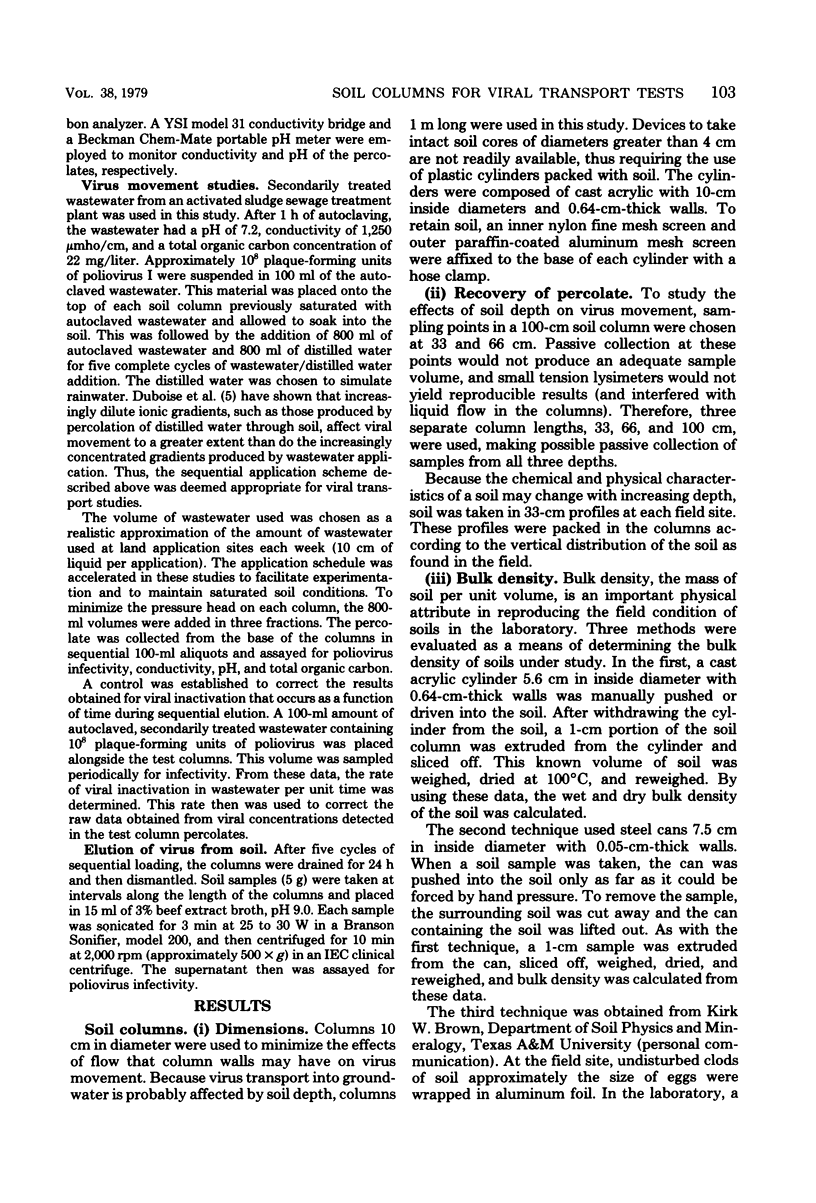
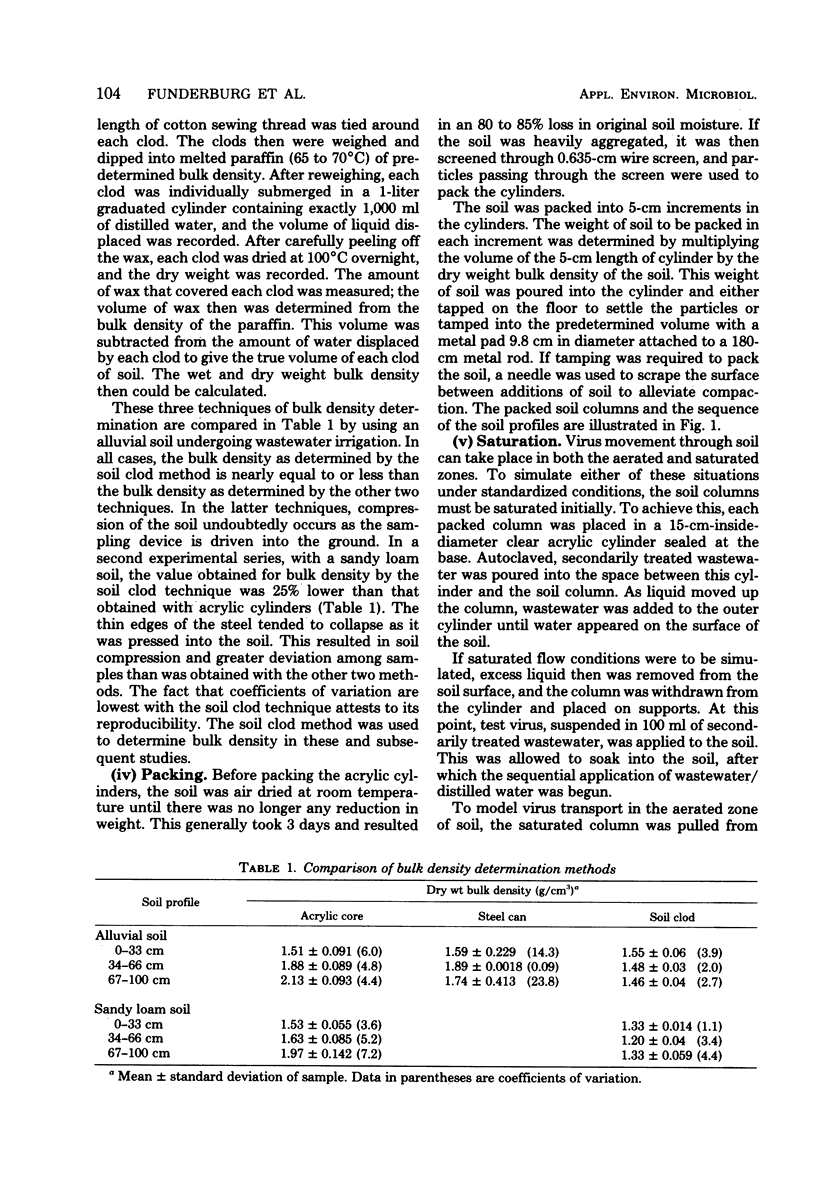
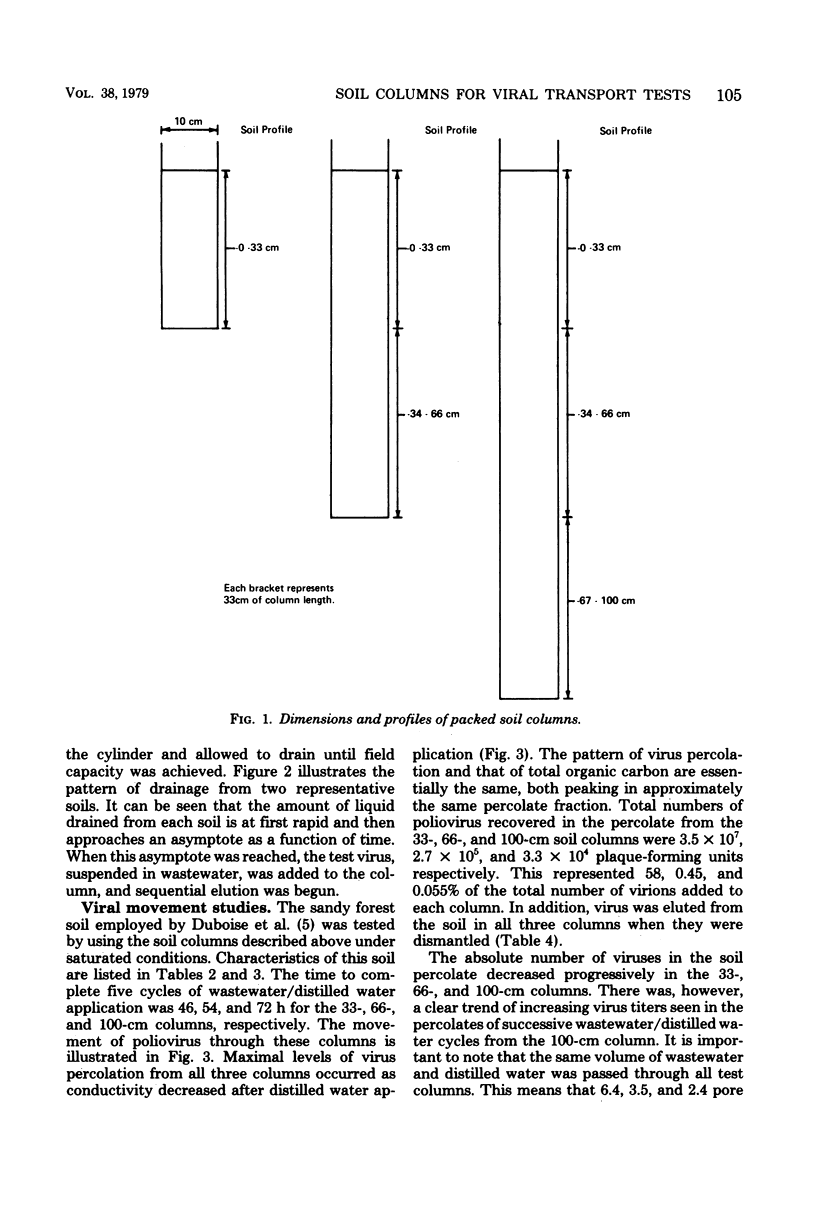
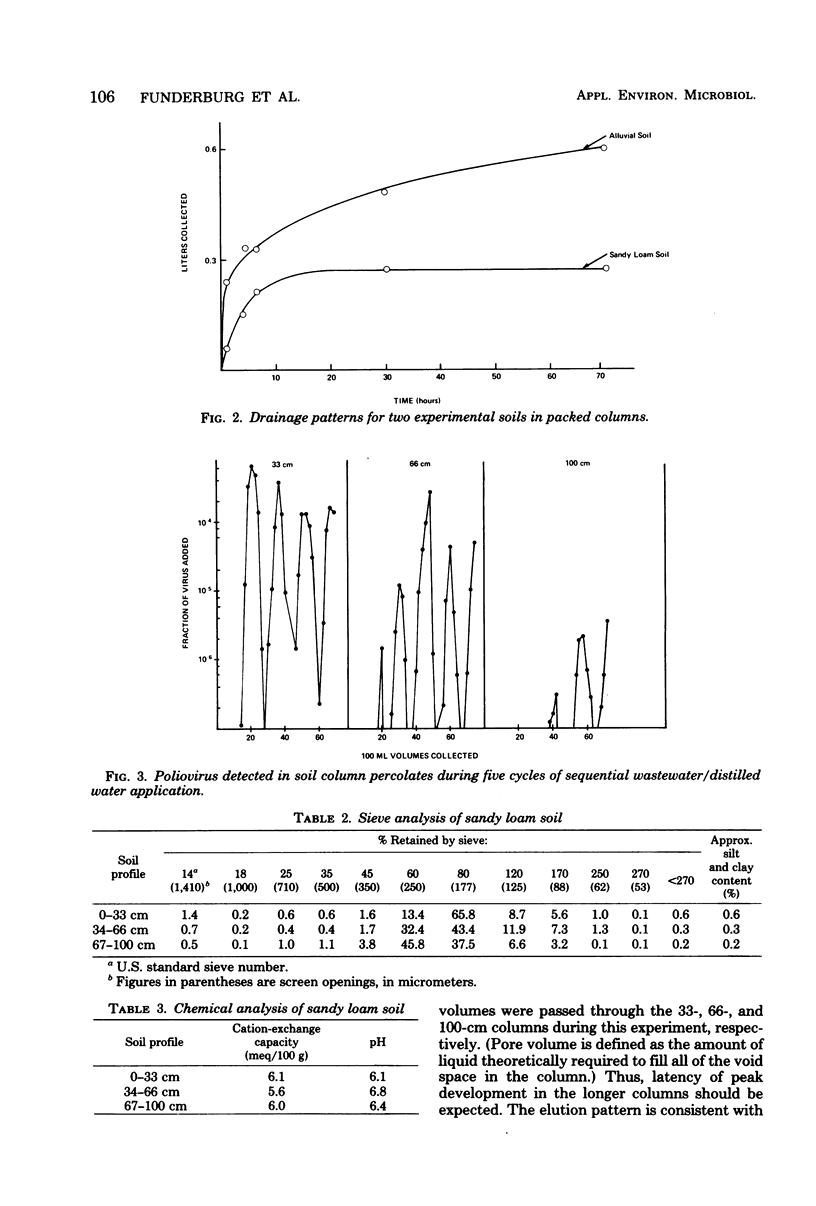
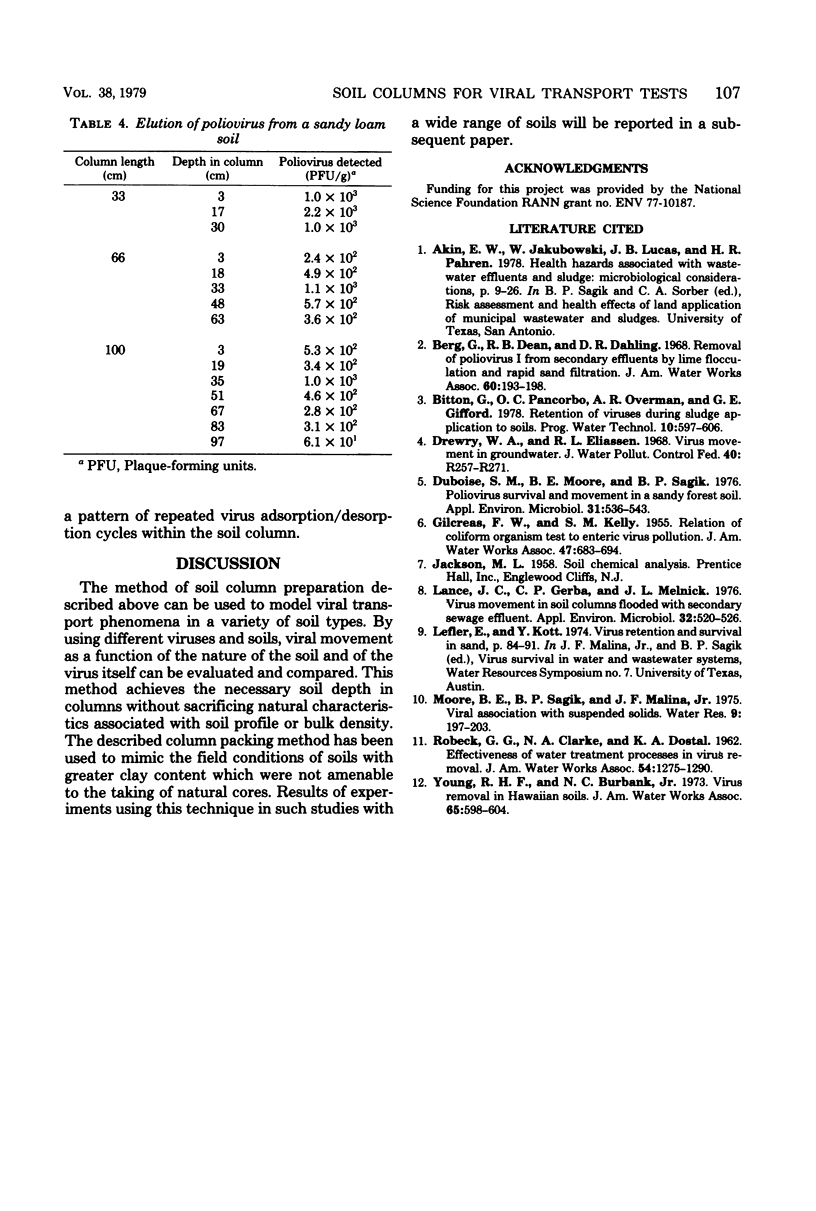
Selected References
These references are in PubMed. This may not be the complete list of references from this article.
- Duboise S. M., Moore B. E., Sagik B. P. Poliovirus survival and movement in a sandy forest soil. Appl Environ Microbiol. 1976 Apr;31(4):536–543. doi: 10.1128/aem.31.4.536-543.1976. [DOI] [PMC free article] [PubMed] [Google Scholar]
- Lance J. C., Gerba C. P., Melnick J. L. Virus movement in soil columns flooded with secondary sewage effluent. Appl Environ Microbiol. 1976 Oct;32(4):520–526. doi: 10.1128/aem.32.4.520-526.1976. [DOI] [PMC free article] [PubMed] [Google Scholar]


